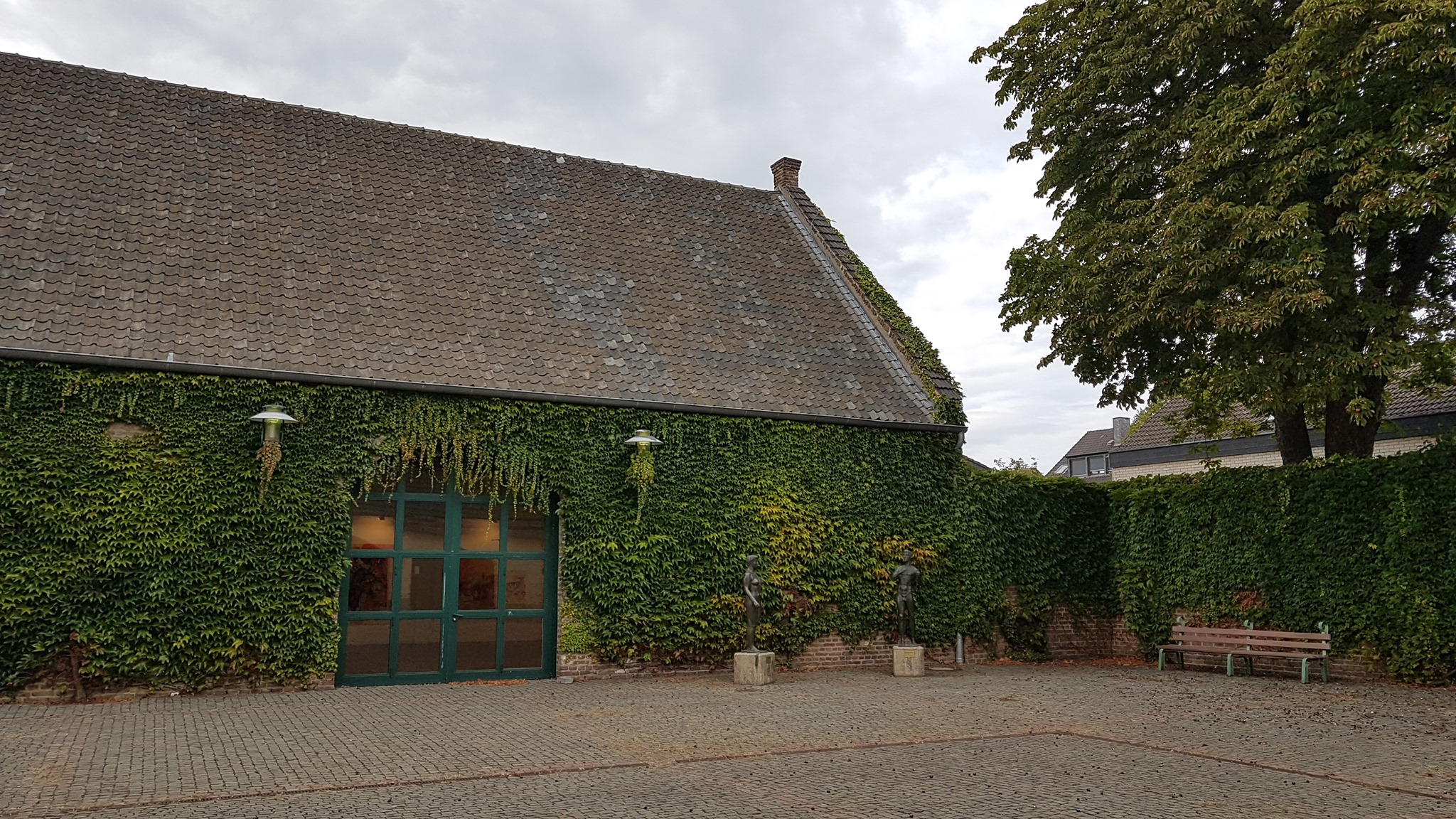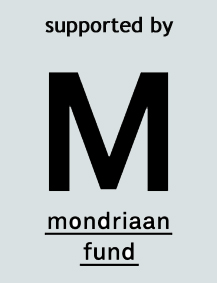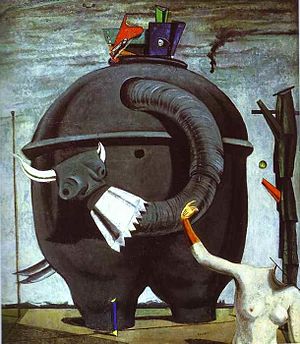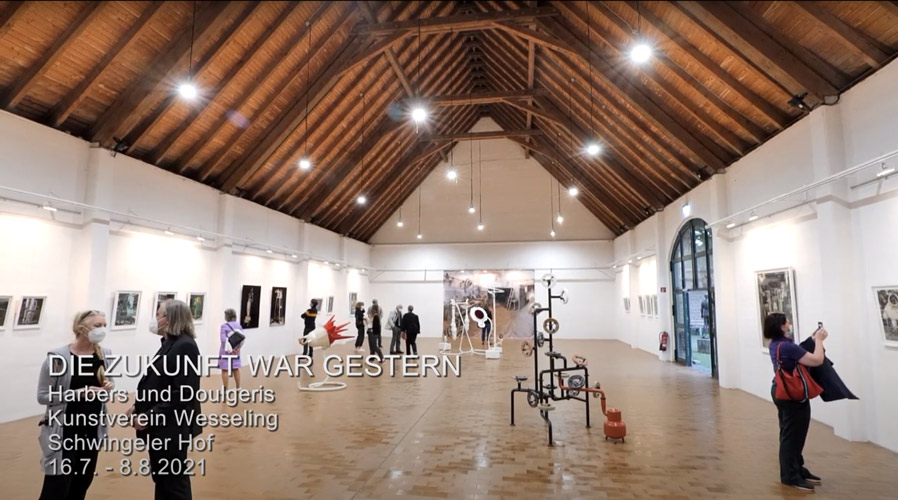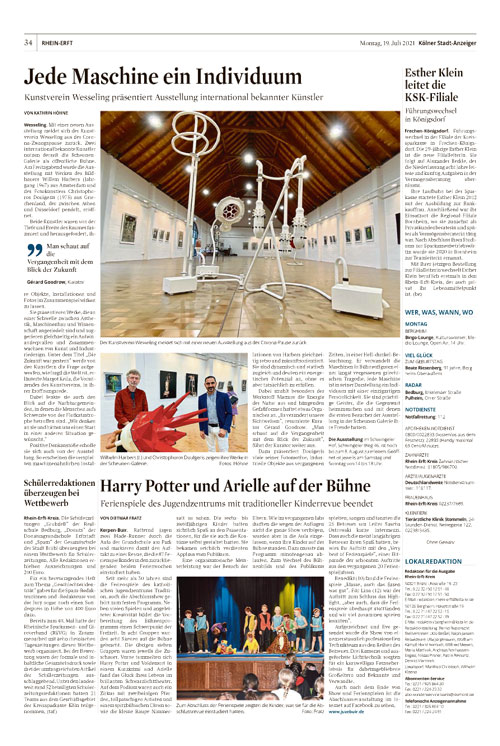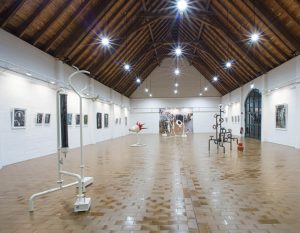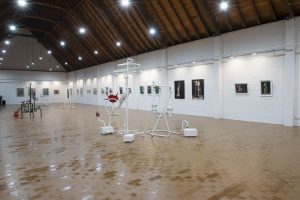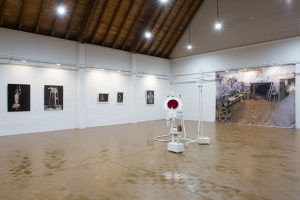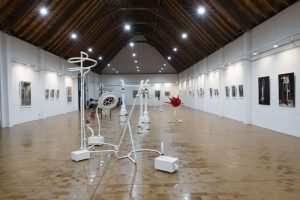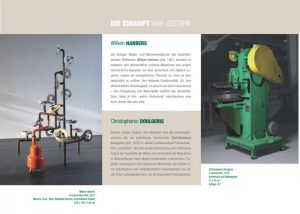DIE ZUKUNFT WAR GESTERN | THE FUTURE WAS YESTERDAY
WILLEM HARBERS AND CHRISTOPHOROS DOULGERIS
curator Gérard Goodrow
16. Juli – 08. August 2021
Opening 16. Juli 2021 19:30
Op uitnodiging van de Kunstverein Wesseling gaan Christophoros en ik een tentoonstelling maken die onze twee werelden verbindt. We hebben al eerder tentoonstellingen gemaakt in Duitsland, Griekenland en Nederland, dus we weten nu precies hoe we deze tentoonstelling willen laten werken. Het is een enorme uitdaging, want het gebouw van de Kunstverein Weseling is monumentaal groot en heeft van zichzelf al een enorme uitstraling. Concurreren heeft geen zin en de juiste harmonie vinden om elkaar te versterken is hier de sleutel. We zijn dan ook erg blij met Gérard Goodrow als curator van de show om ons te begeleiden naar een complete en spannende show! Ik ben enthousiast om te beginnen en de show te zien groeien. Ik hoop dat je naar Wesseling komt en ons kunt vergezellen bij de opening! Tot dan en groeten van Willem.
Opening times:
Sa.17. Juli + So. 18. Juli
Sa.24. Juli + So. 25. Juli
Sa. 31. Juli + So. 01. Aug.
Sa. 07. Aug. + So 08. Aug. 2021
Every weekend from 14.00 till 18.00 hrs and by appointment
The Future Was Yesterday
In 1919, the Dada artist Raoul Hausmann (1886–1971) created his most famous work, the Mechanical Head – The Spirit of Our Time, comprised of a hairdresser’s wig-making dummy with various measuring devices attached to it: the ‘Modern Man’ as cyborg. Two years later, Max Ernst (1891–1976) painted the enigmatic work Celebes: At the interface between Dada and Surrealism, Ernst’s robot-like elephant is clearly a counterpart to Hausmann’s mechanical man. Both works bear witness to Modernism’s hesitant and simultaneously determined embracing of industrialization and technology as catalysers of what Aldous Huxley (1894–1963) would later describe as dystopian in his ground-breaking novel Brave New World (1931).
The coloured metal and marble sculptures assembled by the Dutch artist Willem Harbers (b. 1967) are reminiscent of strange and obviously useless machines and other mechanical apparatuses. Harbers’ pseudo-industrial objects are simultaneously retro and future-oriented. They are both dynamic and static at the same time, merely suggesting energetic potential, but not actually fulfilling this. Their juxtaposition of variously colored pieces of marble and garishly coloured, powder-coated steel suggests the clashing and coalescence of high art and industrial design. Their lack of functionality, that is to say their blatant uselessness, is absurd, yet fascinating – their coloration and materiality seducing the viewer into delving deeper into their true meaning, whatever this may be.
Equally elusive and enigmatic are the industrial machines ‘portrayed’ in the large colour photographs of the Greek artist Christophoros Doulgeris (b. 1975). The chiaroscuro-like lighting of one series of works emphasizes the theatricality of the images, transforming the machines into stage characters from a long forgotten Greek tragedy. Each machine is an individual with its own unique personality. The torn and dusty tarpaulins that cover the machines in a second series of works underscores the association to theatre – discarded and forgotten machines as ghosts of more splendid and prosperous past, risen from the dead to haunt the present. Doulgeris’ photos can be understood as euphemisms for the current political and fiscal status of Greece, which obviously also effects its once flourishing cultural scene.
With The Future Was Yesterday, the Kunstverein Wesseling brings together two artists, who – working completely independently of each other – each focus on the machine as a poignant symbol of humanity. In the tradition of Hausmann and Ernst, they reveal not only both the positive and negative aspects of the interdependency between man and machine, but also suggest that machines do indeed have a life of their own – a life we as humans may never truly comprehend.
Text: Gérard A. Goodrow, June 2021
More information about Christophoros Doulgeris and Gérard Goodrow
Scheunen Galerie Schwingeler Hof,
Schwingeler Weg 44, 50389 Wesseling, Germany.
www.kunstverein-wesseling.de
